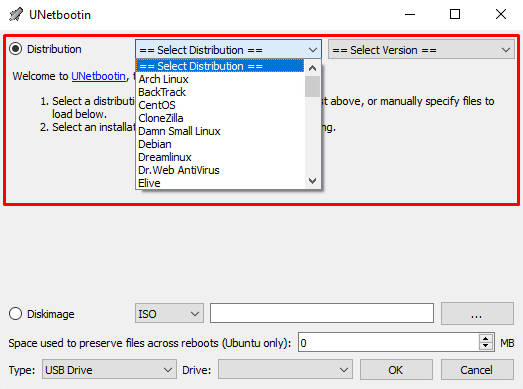

- Using unetbootin to install ubuntu driver#
- Using unetbootin to install ubuntu 32 bit#
- Using unetbootin to install ubuntu windows 10#
- Using unetbootin to install ubuntu android#
It's also far more attractive than it used to be, rivaling if not exceeding the user interfaces of Windows 10 or MacOS. You can throw just about any Linux distribution on a USB stick and test drive it without installing it to your computer. It's free to download and install (although developers welcome donations). There are flavors of Linux built for students, for musicians and creative professionals, for, um, anime fans? You can even roll your own distribution from scratch and literally make it your own.įurthermore, Linux is ridiculously customizable. In that space, Linux has many, many variations called "distributions." While that can result in an overwhelming amount of choice, it also ushers in freedom of choice which simply isn't possible using MacOS or Windows.
Using unetbootin to install ubuntu android#
Hi Android users! Of course, that's your phone and not your desktop PC. In your request for help, please enclose a link to this article.The most popular operating system in the world is actually built on Linux. Note: If you encounter any problems, please post in Support & Help Requests, not here.

To change the time displayed in the clock to a local time, use the following command:Īlso, to log out and then log back into the live USB, use name=ubuntu-mate and pwd=nothing as in no password. Since this is a live USB, not an installation stored on a USB drive, you should not allow automatic updates of any kind.

One caveat, installing the Synaptic Package Manager may reset Software & Updates> Updates to automatically download and install updates. Once rebooted, and everything you previously added or configured shows as working, you are free to go on adding things which I definitely did. I then rebooted, pulling the wireless dongle out of its USB port. I used the terminal to install synaptic package manager. I then added it to my backgrounds and set it to be my desktop background. Next I copied a wallpaper from my hard drive to the live USB Pictures folder.
Using unetbootin to install ubuntu driver#
Next I installed a broadcom wireless driver by entering the following into the mate terminal. I initially set mate to the traditional user interface using mate-tweak to get a desktop that I prefer. Now plug your newly made persistent drive into any computer and check if it really does store data and settings across reboots (Every single one of mine does).Īt first boot, it is very important to have either an ethernet cable plugged in or a wireless dongle that's known to work in order to get something that you want to have installed on your live USB. Once back into 18.04, I edited the Unetbootin syslinux.cfg file to include svideo=SVIDEO-1:d right after quiet splash in order to boot into the live USB on this particular laptop. Unetbootin is slow to watch doing its thing on an old laptop but you should patiently wait it out.ĭon't prematurely stop Unetbootin until it is entirely done as shown below:
Using unetbootin to install ubuntu 32 bit#
You should have an empty freshly formatted fat 32 bit USB key plugged in and ready to use. When you've done that, your dialog box should look something like the one below: This allows the entire flash drive to be used as persistent storage. ISO file that you've already downloaded) and find it using the three dots selection box. The screenshot below shows what Unetbootin looks like when you launch it: It requires superuser rights in order to properly run. If you plan on using this utility more than once, it would be nice if you used mozo (System> Control Center> Look and Feel> Main Menu) to check and perhaps edit Unetbootin's properties to include pkexec just before /usr/bin/unetbootin which launches Unetbootin. You can also create a persistent live USB that allows you to save settings, install a needed wireless driver, and configure your live USB as you see fit. Once you have added the ppa to your system and downloaded and installed Unetbootin, you can use it to create a bootable live USB. There is a questions/answers section for those with problems of one sort or another. The ppa has versions for bionic and previous. You can find Unetbootin at the following ppa.


 0 kommentar(er)
0 kommentar(er)
